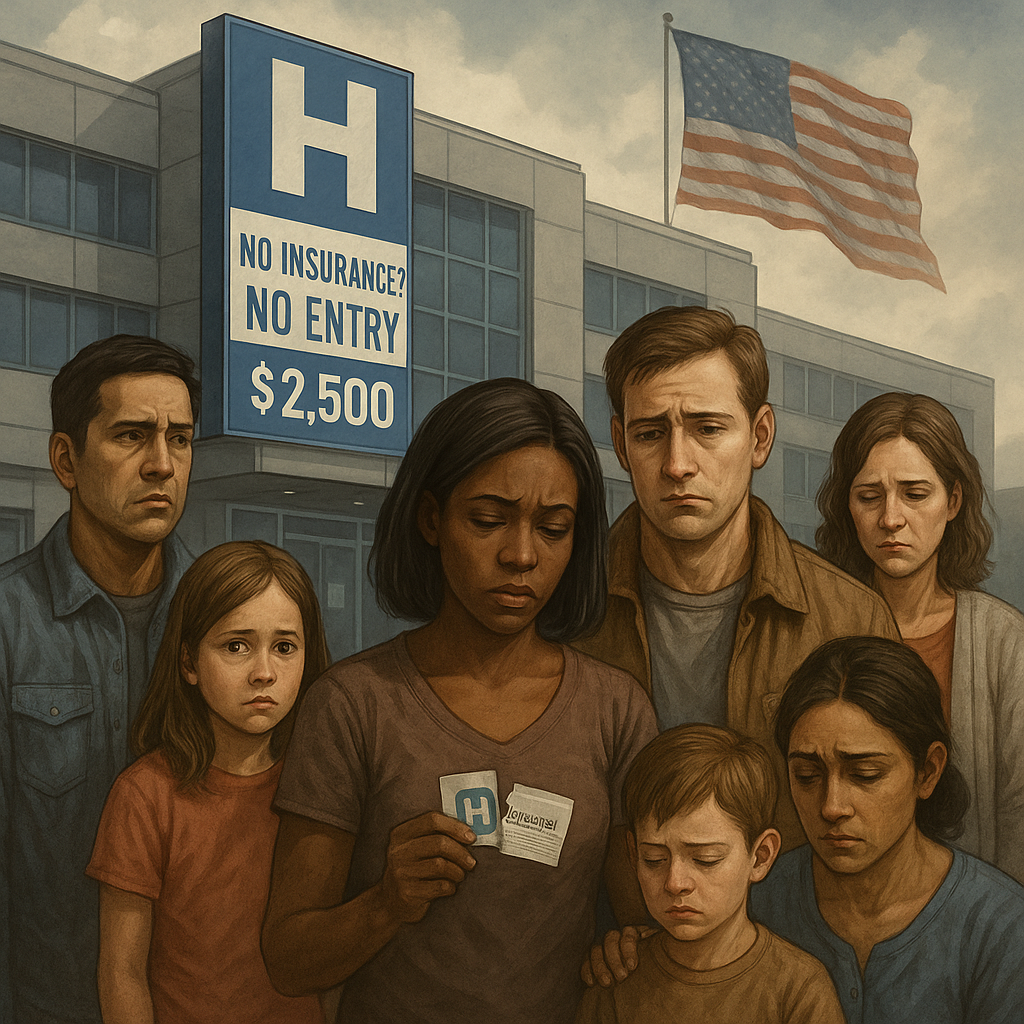
The United States is facing a growing uninsured crisis as rising healthcare costs continue to push millions of Americans out of coverage. Despite advancements in medical technology and policy efforts to expand access, the high cost of care has left many individuals and families struggling to afford even basic health insurance. This phenomenon has far-reaching implications, not only for those directly impacted but also for the healthcare system and society at large.
Healthcare costs in the U.S. have been steadily climbing for decades, driven by many factors, including the high price of prescription drugs, hospital services, and administrative expenses. According to a recent study, the average annual premium for employer-sponsored health insurance for a family of four exceeded $20,000 in 2023. For individuals purchasing insurance on their own, premiums and out-of-pocket costs can be even more prohibitive. These escalating costs have forced many Americans to make tough decisions, such as forgoing insurance altogether or choosing plans with limited coverage that fail to meet their healthcare needs.
One of the most vulnerable groups affected by rising healthcare costs is low- and middle-income families. While programs like Medicaid provide a safety net for some low-income individuals, the eligibility thresholds often leave many working families without access to affordable coverage. For those who earn too much to qualify for Medicaid but too little to afford private insurance, the gap in coverage creates a significant financial burden. Many of these families are forced to choose between paying for health insurance and covering other essential expenses, such as housing, food, and education.
Another group disproportionately impacted by the uninsured crisis is small business employees and self-employed individuals. Unlike larger corporations that can negotiate better rates for group health plans, small businesses and independent workers often face exorbitant premiums in the individual market. This lack of access to affordable coverage leaves millions of workers exposed to financial risk and health insecurity. Moreover, small business owners frequently struggle to provide health benefits to their employees, exacerbating the problem.
The rising number of uninsured individuals has significant consequences for the healthcare system. When people lack insurance, they are more likely to delay or avoid seeking medical care, even when they need it. Preventive services, such as regular check-ups and screenings, are often skipped, leading to worse health outcomes and higher costs in the long run. For instance, conditions that could have been managed or treated early may progress to advanced stages, requiring more expensive and intensive interventions. This dynamic not only jeopardizes individual health but also places additional strain on hospitals and emergency services, which often serve as the safety net for uninsured patients.
Hospitals and healthcare providers also bear the financial brunt of the uninsured crisis. When uninsured patients receive care, particularly in emergency settings, providers often struggle to recoup the costs. This uncompensated care leads to financial losses, which are then passed on to insured patients in the form of higher charges. In essence, the cost of caring for the uninsured contributes to the overall inflation of healthcare prices, creating a vicious cycle that affects everyone.
The broader economic impact of the uninsured crisis cannot be overlooked. Without adequate insurance, individuals are more likely to face significant medical debt, which can have cascading effects on their financial stability. Medical debt is one of the leading causes of bankruptcy in the U.S., and the stress of dealing with unpaid bills can affect mental health, job performance, and overall quality of life. For businesses, the uninsured crisis translates to lost productivity and higher absenteeism rates, as employees dealing with untreated health issues are less likely to perform at their best.
Policy efforts to address the uninsured crisis have had mixed results. The Affordable Care Act (ACA), enacted in 2010, significantly expanded coverage by creating insurance marketplaces, offering subsidies, and expanding Medicaid eligibility in participating states. While the ACA reduced the uninsured rate to historic lows, its impact has been uneven, and coverage gaps persist. Political challenges and efforts to repeal or weaken the law have further complicated its implementation, leaving millions still without access to affordable coverage.
In recent years, the rising cost of healthcare has reignited debates about the need for systemic reform. Proposals such as a public option, which would allow individuals to buy into a government-run insurance plan, or Medicare for All, which envisions a single-payer system, have garnered significant attention. Proponents argue that these models could lower costs by reducing administrative overhead and leveraging government bargaining power to negotiate lower prices for drugs and services. Critics, however, raise concerns about potential disruptions to the existing system, increased taxes, and the feasibility of implementing such sweeping changes.
In the absence of comprehensive reform, states and local governments have taken steps to address the uninsured crisis. Some states have implemented their own public options or expanded Medicaid eligibility beyond federal requirements. Others have introduced initiatives to cap prescription drug prices or create reinsurance programs to stabilize insurance markets. While these efforts have provided relief for some, they are far from a universal solution and highlight the fragmented nature of the U.S. healthcare system.
The role of employers in addressing the uninsured crisis is also critical. As healthcare costs rise, many employers are shifting more of the financial burden onto employees through higher deductibles, co-pays, and premiums. While this approach may reduce immediate costs for businesses, it risks exacerbating the affordability problem for workers. Innovative solutions, such as wellness programs, direct primary care models, and partnerships with insurers to offer tailored plans, can help mitigate these challenges. Employers who invest in their workforce’s health and well-being may ultimately see returns in the form of improved productivity and reduced turnover.
Technology and innovation also hold promise for addressing the uninsured crisis. Telehealth services, for example, can expand access to care for individuals in underserved areas while reducing costs. Digital health tools and apps can empower patients to manage their health more effectively, potentially preventing costly complications. Additionally, advancements in artificial intelligence and data analytics can help identify at-risk populations and tailor interventions to improve outcomes and lower costs. However, these technologies must be implemented equitably to ensure they reach those who need them most.
Public awareness and advocacy are essential for driving meaningful change. The uninsured crisis is not just a policy issue; it is a societal challenge that requires collective action. Advocacy groups, community organizations, and individuals can play a crucial role in raising awareness, lobbying for policy changes, and supporting those affected by rising healthcare costs. By fostering a national conversation about the true cost of healthcare and the importance of coverage, stakeholders can build momentum for solutions that benefit all Americans.
Addressing the uninsured crisis requires a multifaceted approach that tackles both the root causes and the symptoms of the problem. While rising healthcare costs are a significant driver, they are intertwined with broader issues, such as income inequality, systemic inefficiencies, and regulatory complexities. Solutions must therefore be comprehensive, coordinated, and sustainable, balancing the need for affordability with the imperative to maintain high-quality care.
The uninsured crisis is a stark reminder of the challenges facing the U.S. healthcare system. As rising costs push more Americans out of coverage, the consequences ripple across families, communities, and the economy. By prioritizing access, affordability, and innovation, policymakers, employers, and healthcare providers can work together to reverse this troubling trend and ensure that every American has the opportunity to lead a healthy, secure life.
